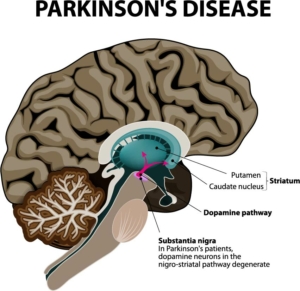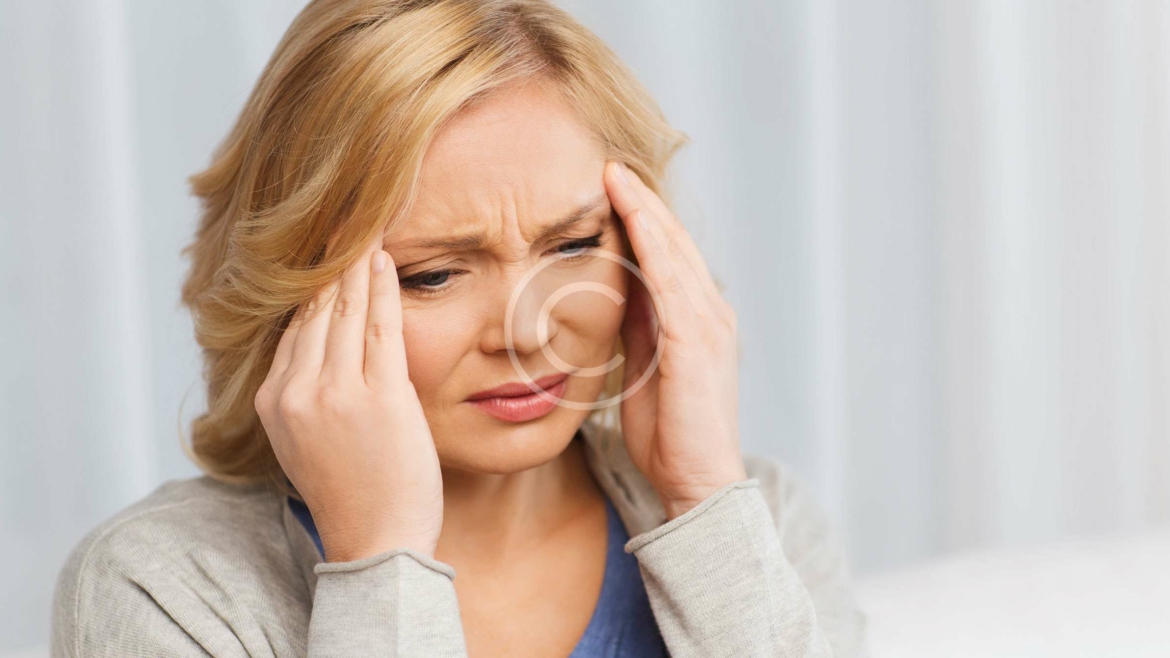Conditions that Can be Treated
Neurological Diseases
- peripheral neuropathy
- Parkinson’s diseas
- radiculopathy
- trigeminal neuralgia
- stroke
Services- acupuncture, electro-acupuncture, traditional Chinese herbal medicine, acupoint injection therapy, clinical nutrition, Oncology (side effects of oncology treatment)

Bell’s Palsy
Bell’s Palsy is a neuropathy of the facial nerves (facial nerve VII) and is characterized by weak or paralyzed muscles of the facial expression on one side of the face. The cause of Bell’s palsy is unknown, but it is thought that it may be caused by a viral infection (even though anti-viral drugs haven’t shown to be very effective treating it).
Acupuncture has been used successfully for the treatment of Bell’s Palsy. Acupuncture can significantly shorten the bell’s palsy recovery process, reducing the suffering associated with speaking, chewing, swallowing, drinking, eye-closing, and sleeping. It is best to start acupuncture sooner rather than later, because the likelihood of acupuncture correcting this condition depends on the severity and duration of symptoms.
Recent acupuncture studies demonstrate that “acupuncture significantly improves motor nerve conduction velocity and amplitude and also promotes functional nerve repair” which may be one of the reasons acupuncture improves recovery from Bell’s Palsy. (Neural Regeneration Research) https://www.ncbi.nlm.nih.gov/pmc/articles/PMC4357096/

Fibromyalgia
Fibromyalgia (FM) affects an estimated five million Americans, 80%-90% of whom are women. The disorder is characterized by widespread pain and diffuse tenderness, but the disorder carries with it a number of other life-disrupting symptoms that vary from individual to individual. The exact causes of FM are not well understood, but it’s theorized that traumatic or stressful life events, combined with repetitive injuries may be factors. There are no known biological markers, so that makes diagnosing FM problematic.
Because medical treatment of fibromyalgia is not very effective, acupuncture is used by one in five fibromyalgia patients within two years of diagnosis.
Acupuncture has been shown to provide relief for patients with FM. A recent study utilized individualized acupuncture treatments in patients with FM. Patients were diagnosed according to Traditional Chinese Medicine (TCM) theory and treated nine times. At the end of the study, the researchers concluded “Individualized acupuncture treatment in patients with fibromyalgia proved efficacious in terms of pain relief compared with placebo treatment. The positive effects persisted at one year, and it’s side effects were mild and infrequent” (“Acupuncture for Fibromyalgia in Primary care: A Randomized Controlled Trial”) https://www.aim.bmj.com/content/34/4/257

Parkinson’s Disease
Parkinson’s Disease (PD) is a progressive disorder of the nervous system that affects movement. It is caused by nerve cell damage in the brain that causes dopamine levels to drop. Dopamine is a neurotransmitter that helps to regulate movement and emotional responses. PD effects more than 200,000 people in the United States.
The cause of PD is unknown but both genetic and environmental triggers appear to play a role. People with PD have low brain dopamine concentrations. Unfortunately, dopamine can’t be given directly because it can’t enter the brain. Presently, there is no cure but medications are currently prescribed to help with walking, tremor, and movement.
Acupuncture can be used to slow the progression of the disease and assist in functional improvement. There have been many positive research studies with acupuncture for PD. A thorough review of all current research on acupuncture for PD (clinical studies, animal studies, and functional MRI imaging studies) was completed in 2015. After analyzing the data, the researchers concluded “First acupuncture is anti-inflammatory, anti-oxidative, anti-apoptotic (prevents cell death), neurotrophic (helps repair nerves), and increases dopamine availability, restores post-synaptic changes due to dopamine loss (repairs damage caused by low dopamine), and changes certain gene and protein expressions”.
They continue “Second, acupuncture re-activates the dysfunctional brain circuitry for motor and non-motor function and relieves the symptoms. Clinical trials suggest that acupuncture is effective in non-motor symptoms in sleep, rest, and depression. Another clear benefit is that acupuncture can reduce the medication (therapeutic L-dopa) treatment dose and therefore reduce the risk of the medication’s related side effects (L-dopa induced dyskinesia)”.
The researchers conclude with “Acupuncture, as a potential neuroprotective agent, is supported by preclinical animal studies with consistent efficacy and pilot clinical trials show positive evidence of acupuncture’s benefit in treating PD, and it is safe and well tolerated”. (“Acupuncture for Parkinson’s Disease: A Review of Clinical, Animal, and Functional Magnetic Resonance Imaging Studies”) https://www.sciencesdirect.com/science/article/pii/S0254627215301643

Peripheral Neuropathy
Peripheral Neuropathy (PN) is a result of damage to the peripheral nerves. It often causes weakness, numbness, and pain, usually in the hands and feet. It can also affect other areas of the body.
There are over 100 types of peripheral neuropathies and therefore many possible causes. Clinically the most common causes are nerve damage from trauma or repetitive stress, metabolic and endocrine disorders (such as diabetes), toxicity, nutritional deficiency, and genetic disorders.
Physical injury (trauma and repetitive stress) is the most common cause of acquired peripheral neuropathy. Peripheral nerves have the ability to regenerate axons (as long as the nerve cell has not died) which may lead to functional recovery over time. Recent studies demonstrate that acupuncture significantly improves motor nerve conduction velocity and amplitude and also promotes functional nerve repair (“Neural Regeneration Research”) https://www.ncbi.nlm/nih.gov/pubmed/17355547
Diabetic Peripheral Neuropathy
A recent study of 2,000 young diabetes patients showed that 7% of those with type 1 diabetes and 20% of those with type 2 diabetes had diabetic peripheral neuropathy (DPN). And these were young diabetics. The same study showed “alarming rates” of increase of DPN for every five years that people have diabetes. https://care.diabetesjournals.org/content/early/2017/06/30/dc17-0179
In DPN the blood sugar must be adequately regulated (acupuncture along with diet modification and exercise can really help with this). DPN is twice as likely in smokers than in non-smokers. Smoking constricts blood vessels that supply nutrients to peripheral nerves and can worsen neuropathic symptoms and slow the repair of damaged tissues (acupuncture can assist patients to stop smoking as well).
Acupuncture has been shown to relieve diabetic peripheral neuropathy (“Fifteen-Day Acupuncture Treatment Relieves Diabetic Peripheral Neuropathy”) and we have had great success in the clinic. https://www.sciencedirect.com/science/article/pii/S2005290110600180

Shingles
Herpes zoster, also known as zoster and shingles, is caused by the reactivation of the varicella-zoster virus, the same virus that causes varicella (chicken pox). Shingles is caused by a re-emergence of the virus, which has been lying dormant for years within the nerve cells. The virus causes inflammation of the spinal ganglion and a vesicular eruption along the area of distribution of the affected spinal nerves. Patients feel excruciating, burning pain or tingling on one side of the body along the area related to the affected nerves.
The reactivation of the dormant virus may be triggered by trauma, diseases like pneumonia, injections of certain drugs, or prolonged stress which suppresses the immune function.
A significant proportion (18%-41%) of patients suffering with shingles experience intense or very intense pain. Frequently, these patients, despite the administration of complex drug combinations, cannot achieve pain control. They suffer with the metabolic and side effects of the drugs, but are still in significant pain.
Acupuncture can reduce pain levels, improve the pain-killing ability of opioid drugs (so the patient gets a greater benefit from a smaller dosage), and speed healing and recovery from shingles. Acupuncture accelerates the healing process through several mechanisms. Needling induces the release of endorphins which reduces the stress level of the patient. This process helps restore the function of the immune system, which in turn deactivates the virus and brings it under control. Local needling along the infected nerve also stimulates an anti-inflammatory reaction and helps recovery or regeneration of the damaged nerve fibers.
In a recent study, acupuncture was compared to standard drug therapy for shingles pain. Researchers concluded “Patients with intense or very intense pain showed a significant and similar degree of pain relief using acupuncture and standard pharmacological therapy. Given that patients treated with acupuncture carry a lower risk of cumulative drug toxicity, acupuncture might be appropriately considered among the available therapeutic options for the control of severe acute HZ (herpes zoster) related pain” (“Acupuncture for the Treatment of Severe Acute Pain in Herpes Zoster: Results of a Nested, Open-label Randomized Trial”) https://www.ncbi.nlm.nih.gov/pmc/articles/PMC3125389/

Stroke
A stroke, or cerebrovascular accident, occurs when the blood supply to a part of the brain is interrupted or severely reduced, depriving the brain tissue of oxygen and nutrients. There are two primary types- ischemic and hemorrhagic.
Ischemic strokes occur when the arteries to the brain become narrowed or blocked, causing severely reduced blood flow to the brain.
Hemorrhagic strokes occur when a blood vessel in the brain leaks or ruptures.
A stroke can cause temporary or permanent disabilities depending on how long the brain lacks blood flow, and which part was affected. Common disabilities are paralysis, difficulty walking, difficulty talking or swallowing, memory loss/thinking difficulties, emotional problems, and pain.
Acupuncture is very effective for stroke rehabilitation. There have been many positive medical studies on acupuncture for stroke patients. Cochrane Reviews are systematic reviews of primary research in human healthcare and health policy, and are considered the “gold standard” in evidence-based healthcare. A Cochrane Review on acupuncture for stroke rehabilitation was completed in 2016. After reviewing all published medical research, the reviewers concluded “From the available evidence, acupuncture may have beneficial effects on improving dependency, global neurological deficiency, and some specific neurological impairments for people with stroke in the convalescent stage, with no obvious serious adverse events” (“Acupuncture for Stroke Rehabilitation, A Cochrane Review”) https://www.ncbi.nlm.nih.gov/pubmed/27562656

Trigeminal Neuralgia
Trigeminal Neuralgia (TN) is a chronic, reoccurring pain on one side of the face. The pain is caused by a disturbance in the function of the trigeminal nerve, which is the major nerve that carries sensation from the face to the brain. The pain can be excruciating and may last for a few seconds or a few minutes. The exact cause is unclear, but it is believed to involve the loss of myelin around the trigeminal nerve, possibly from compression from a blood vessel. TN is medically managed with either drugs or surgery, but both of these interventions may not be effective and may cause unwanted side effects and other possible complications.
Acupuncture can produce excellent results when other treatments fail. In one remarkable published case study, a patient had TN for 25 years and had tried various treatments (carbamazepine, trigeminal nerve block, and radiofrequency rhizotomy) but none adequately addressed her pain. After 14 acupuncture treatments (acupuncture three times per week for four weeks, then twice per week for one week), she was completely free of pain and was still pain free at six months after treatment. https://www.ncbi.nlm.nih.gov/pmc/articles/PMC2797593
Typically, acupuncture can significantly shorten the recovery process and result in significant reduction in the frequency and intensity of TN pain. It is always better to start acupuncture sooner rather than later, because the efficacy of acupuncture for this condition typically depends on the severity and duration of symptoms.


